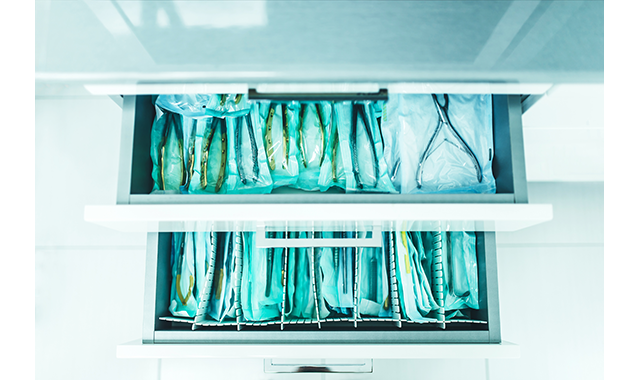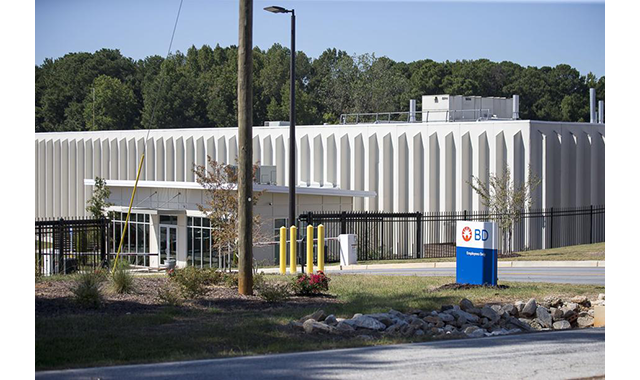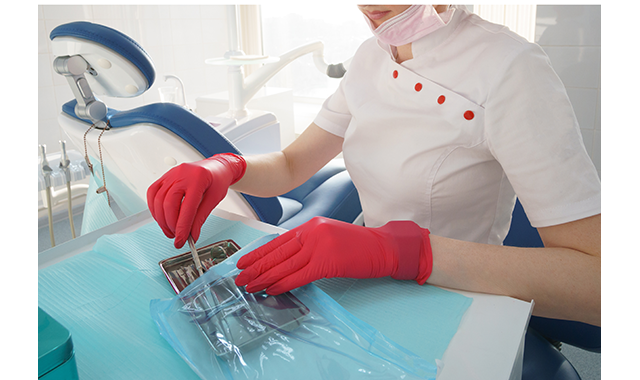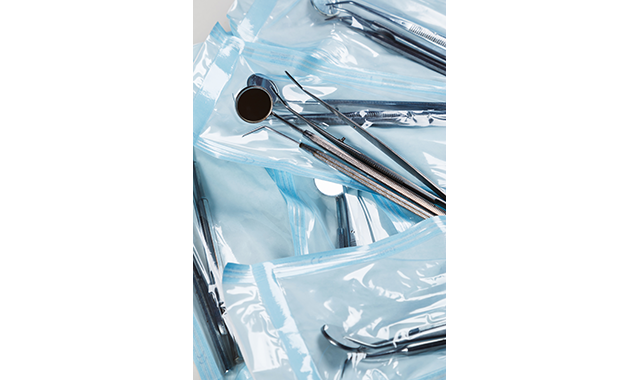A looming danger as the dental industry faces device shortage

There are precious few ways in which heat-sensitive medical and dental devices and equipment can be sterilized for use. Ideally, steam heat would be used to sterilize this equipment. Unfortunately, steam heat is not a viable option for a number of products. For instance, heat-sensitive plastic tubing and surgical gloves can't go into a steam sterilizer as they would melt. Other products are simply too large or unwieldy to fit into such devices.
In those cases, products are shipped to sterilization facilities that utilize ethylene oxide (EtO) gas as a means of sterilization. Recently, however, there has been a push to reduce the use of EtO due to environmental and health concerns.
What does this mean for dental practicesÂ-especially oral surgeons-and device manufacturers? There is no simple solution, largely because EtO is such an established part of the manufacturing and reprocessing cycle.
Use and regulation of EtO
In November 2019, the FDA convened a public advisory committee to receive comment on the feasibility and strategies to reduce or eliminate EtO emissions from industrial medical device sterilization facilities. The committee meeting of the General Hospital and Personal Use Devices Panel of the Medical Devices Advisory Committee occurred following the shutdowns of three major EtO sterilization facilities. Those shutdowns led to concerns about sterilized device shortages and illustrated the challenges of sterilizing medical equipment without EtO.
EtO sterilization is the most common way to sterilize medical equipment, because it works at low temperatures-between 90°F and 135°F-making it ideal for devices made of multiple components and materials – including plastics, polymers, metals and glass, as well as coatings, bonds and packaging.
EtO sterilization is a highly regulated process, and device manufacturers, hospitals, and third-party sterilizers must follow controls established by the Food and Drug Administration, the Environmental Protection Agency, the Occupational Safety and Health Administration, and other government agencies to protect patients, workers, and the environment.
Specifically, the FDA must preview market submissions to ensure the sterility information is in conforms to internationally agreed upon standards. There are two voluntary consensus standards that dictate how to develop, validate, and control the EtO sterilization processes for medical devices. These standards help ensure levels of EtO on medical devices are within safe limits.
Due to their size, shape, complexity or material composition, EtO is the only sterilization option for many medical devices. Additionally, items like procedure kits for IVs are received sterile. These kits have to be packaged in a permeable plastic in order for the EtO to enter the packaging and permeate and sterilize all of the devices, infection prevention consultant and speaker Jackie Dorst, RDH, BS, explains.
Continue reading on the next page...
Facility shutdowns
Recent months have seen several sterilization plants shut their doors, causing a bottleneck in nationwide device sterilization capacity. A Sterigenics facility in Smyrna, Cobb County, Ga. temporarily ceased production amid concerns the plant's use of EtO, which is linked to cancer, emitted into the surrounding community, according to the county commissioner’s website. Apprehension only rose when state regulators deployed an emergency response team to the plant after employees were forced to evacuate due to a toxic gas leak on July 31, 2019.
Voluntary plans to add to the facility’s emissions control capabilities were soon released by Sterigenics, which were approved by the Georgia Environmental Protection Division (EPD) in August 2019. Further requirements from the Cobb County fire marshal and an investigation into operations and air quality have kept operations closed as of December 2019.
The Becton Dickson plant in Covington, Ga. nearly closed for good after an EtO leak went unnoticed for eight days in September 2019. (Image via Alyssa Pointer, The Atlanta Journal-Constitution).

A separate sterilization plant in Covington, Ga., Becton Dickinson (BD), nearly closed after a leak of 54.5 pounds of EtO went unnoticed for eight days in September 2019. BD soon pledged to spend $8 million to update its emissions control abilities, but the state claimed the company was stalling. The following month, the state filed a temporary restraining order in court to close the plant until it met environmental regulations. Days later, BD came to an arrangement with the court that said it could resume operations as long as the company committed to previously agreed upon emissions control additions and allowed for air quality testing by the state.
Another Sterigenics facility, this one in Willowbrook, Ill., closed in October 2019, citing an “unstable legislative and regulatory landscape” after residents and lawmakers worked to shutter the facility for good.
More recently, Sterilization Services of Georgia in Atlanta is currently being fined $3,000 per day for failing to install a filtration system to reduce EtO emissions. The fines began on Jan. 1 and continue until Jan. 31, unless the company complies before that date.
These closures and others, whether temporary or otherwise, are causing remaining facilities to operate at near maximum capacity.
Continue reading on the next page...
Device shortages
The consequences of these closures have not been lost on the FDA, which released a statement on the matter in October 2019.
“Without adequate availability of EtO sterilization, we anticipate a national shortage of these devices and other critical devices including feeding tube devices used in neonatal intensive care units, drug-eluting cardiac stents, catheters, shunts, and other implantable devices,” the agency said.
Most third-party EtO sterilization facilities are currently operating at 90 percent capacity, Chaun Powell, group vice president of strategic supplier engagement at Premier Inc., said when he testified at an FDA panel in November 2019.
“Following the closure of Sterigenics in Illinois, Viant in Michigan, and Sterigenics in Georgia, the current excess capacity is 520 million units. The estimated capacity at Medline in Illinois and BD in Georgia is 550 million units. Simple math shows that if those two plants close, or any similarly sized plants close, we will exceed the excess sterilization capacity for current FDA approved facilities in the U.S.”
A nationwide device shortage will be felt in every arena of health care, including dentistry.

The impending device shortage would be felt nationwide, the FDA says, and could be damaging enough to compromise patient care. The dental industry is not exempt from this, Dorst says.
The impact of EtO sterilization facilities closing could also cause a shortage of sterile implant posts, sterile burs, and sterile endodontic files and supplies, Dorst continues. This is dependent on the method of sterilization that dental companies use for these devices, she adds.
“Products used in oral surgery are especially at risk,” she says. “Those include things like sterile surgical gloves, the supplies used for IV sedation, or any other things used for a dental surgical procedure.”
Hospitals and other providers can be left in the dark on how their instruments were sterilized, Drost points out.
“The manufacturers do not normally provide information on the method of sterilization for these dental items. If EtO is the only ‘Validated by FDA’ sterilization method for these dental items, then after sterile inventories are depleted, there will be shortages for dentists.”
Scott Whitaker, president and CEO of Advanced Medical Technology Association (AdvaMed), a trade organization representing the medical technology industry, responded to the FDA and also addressed health concerns posed by EtO.
“Critical medical devices might not make it into doctors’ and surgeons’ hands if we aren’t careful as we have this important conversation about the true risk of these EtO sterilization plants,” Whitaker says. “We absolutely understand why those who live around these plants are deeply concerned, based on what they’ve heard and read. But leading toxicologists and epidemiologists are certain that media reports have been misleading, and that the communities surrounding these plants are safe. These experts need to be a much bigger part of the conversation within these neighborhoods and with policymakers,” he says.
Continue reading on the next page...
Manufacturers
Restricting EtO as a sterilization option certainly poses a challenge for device manufacturers. The method in which products are sterilized is factored into every step of a product’s development lifecycle. Furthermore, sterilization methods must be approved by the FDA.
Many devices must be sterilized using EtO due to their manufacturing and a lack of other options.

At the FDA’s medical devices advisory committee meeting, Phil Cogdill, director of quality sterilization and microbiology at Medtronic, provided the panel with an industry viewpoint of sterility assurance and optimizing EtO sterilization. EtO is used to sterilize about half of all medical devices worldwide, and of the medical devices that recommend EtO sterilization, only two percent have validated an alternative method for sterilization, he said.
“Sterilization is a complex process that starts and ends with the patient,” Cogdill told the panel. “It impacts manufacturing and distribution of the devices across the entire supply chain. And the sterilization is not just about eradicating microorganisms; it also involves making sure the functionality or performance of the devices is not impaired, considering the device's full lifecycle.”
Sterilization is considered throughout the entire manufacturing process, from research and development, to planning, sourcing, and delivery to ensure that the product structure or performance is not compromised, Cogdill added.
Continue reading on the next page...
EtO alternatives
Sterilization is a difficult process, and with EtO so ingrained in the process, other options are hard to come by.
“It’s important to note at this time there are no readily available processes or facilities that can serve as viable alternatives to those that use EtO to sterilize these devices,” the FDA’s statement said. “In short, this method is critical to our health care system and to the continued availability of safe, effective, and high-quality medical devices.”
One alternative to EtO could be low temperature radiation, Dorst says, but that method has not been sanctioned by the FDA, a fact that leaves companies with few options. Plus, for some of these products, methods such as steam, radiation, or other sterilants are not viable options. Using non-EtO sterilization methods could result in material degradation, rendering the products potentially unsafe for patients and nearly unusable for medical professionals.
“Many of these devices, when they submitted to the FDA for approval, the companies manufacturing the device did not submit laboratory data that these devices could also be sterilized using radiation,” she says. “So even though radiation is an alternative, it hasn't been validated and approved by the FDA. Right now, there's a push to get the FDA to put this on the fast track.”
The FDA says they are committed to working with manufacturers to find alternative sterilization methods. In July 2019, the FDA announced two public innovation challenges-the first is to identify viable alternatives to EtO; the second is to reduce EtO emissions. The agency encourages manufacturers to provide them with information on potential supply issues via email or by calling 1-800-638-2041. More information on EtO use from the FDA can be found here.
DPR associate editor Kristin Hohman contributed to this article.